
How to Use Solar Charge Controller: Examples, Pinouts, and Specs
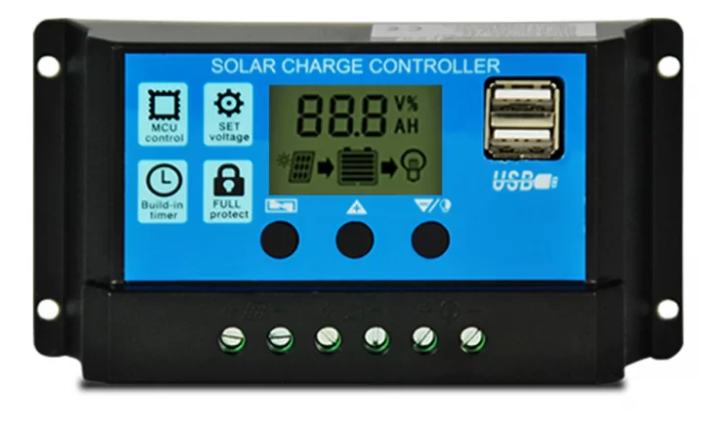
 Design with Solar Charge Controller in Cirkit Designer
Design with Solar Charge Controller in Cirkit DesignerIntroduction
The Solar Charge Controller is a critical component in solar power systems, designed to regulate the voltage and current coming from a solar panel to a battery. Manufactured by PWM, this device ensures optimal charging of batteries while preventing overcharging, over-discharging, and potential damage to the battery. It also helps improve the overall efficiency and lifespan of the solar power system.
Explore Projects Built with Solar Charge Controller
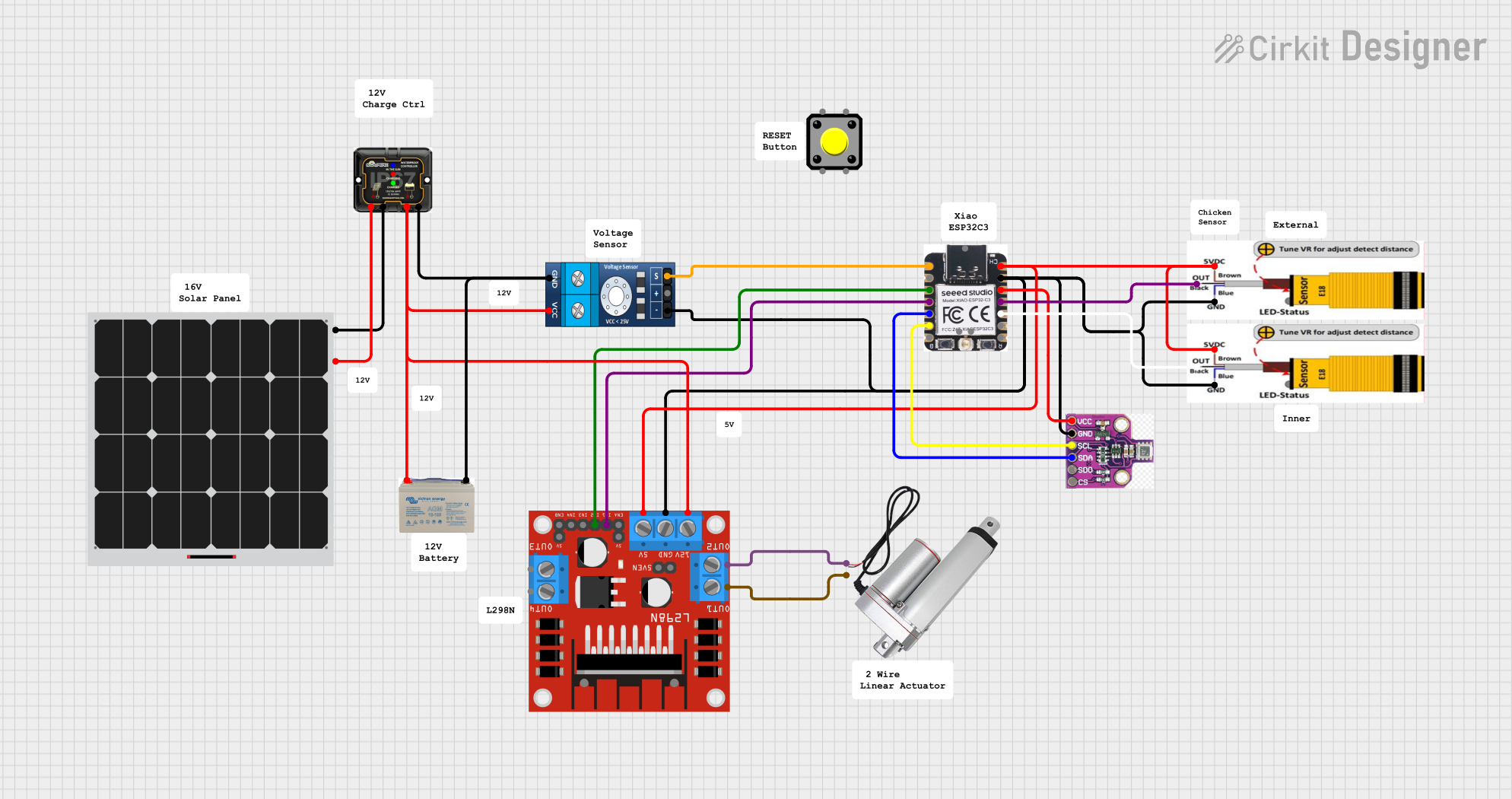
 Open Project in Cirkit Designer
Open Project in Cirkit Designer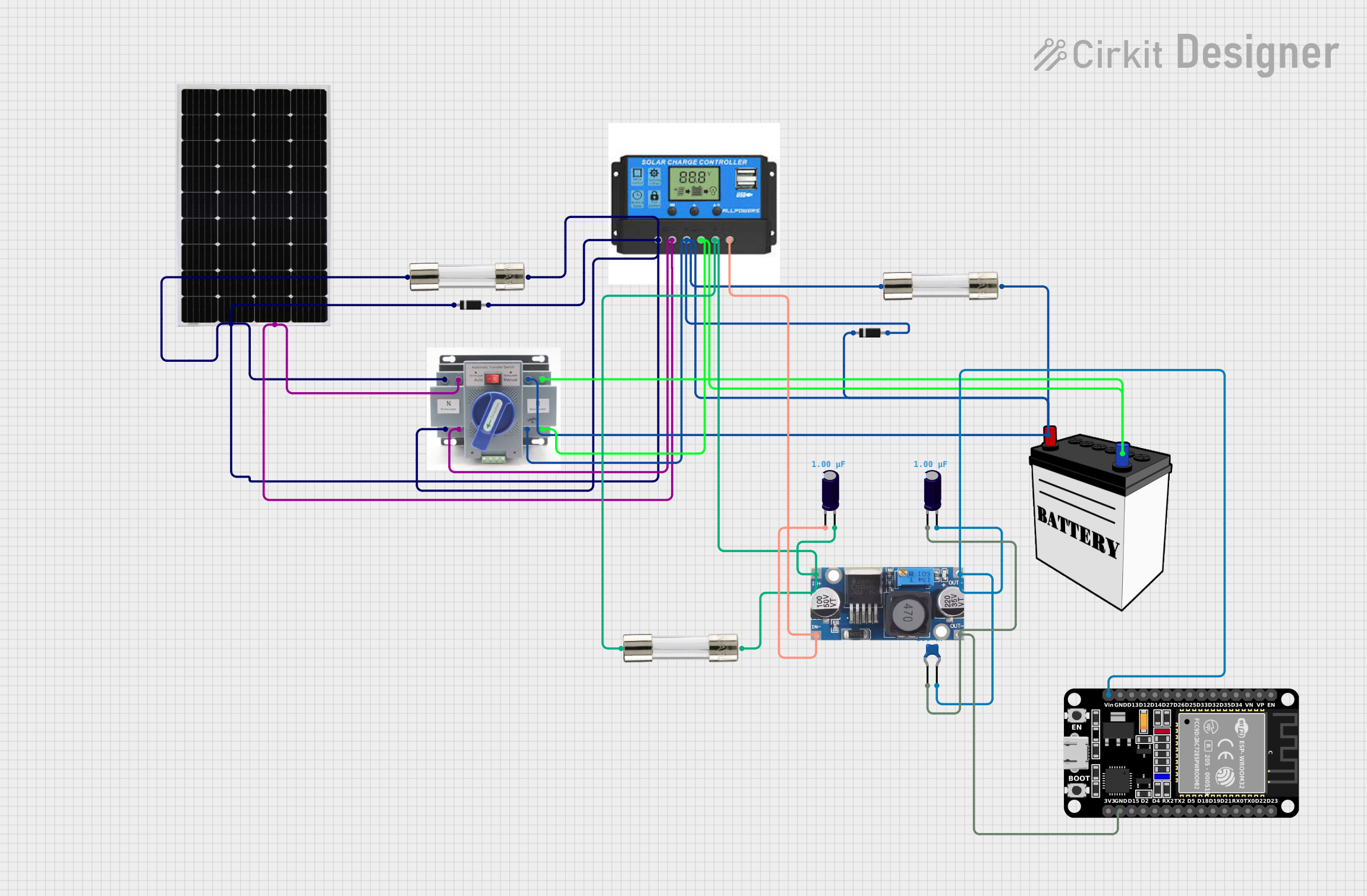
 Open Project in Cirkit Designer
Open Project in Cirkit Designer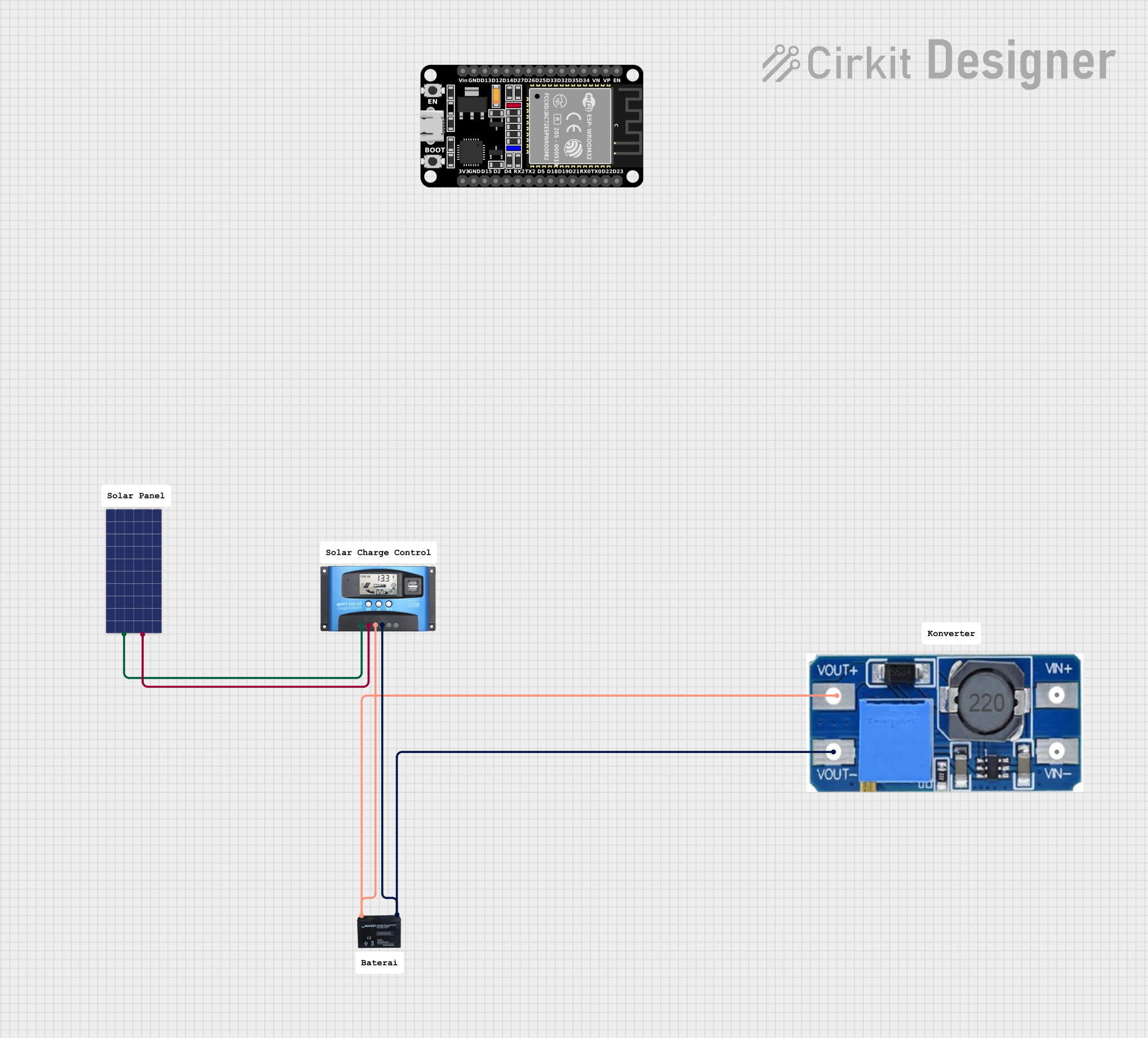
 Open Project in Cirkit Designer
Open Project in Cirkit Designer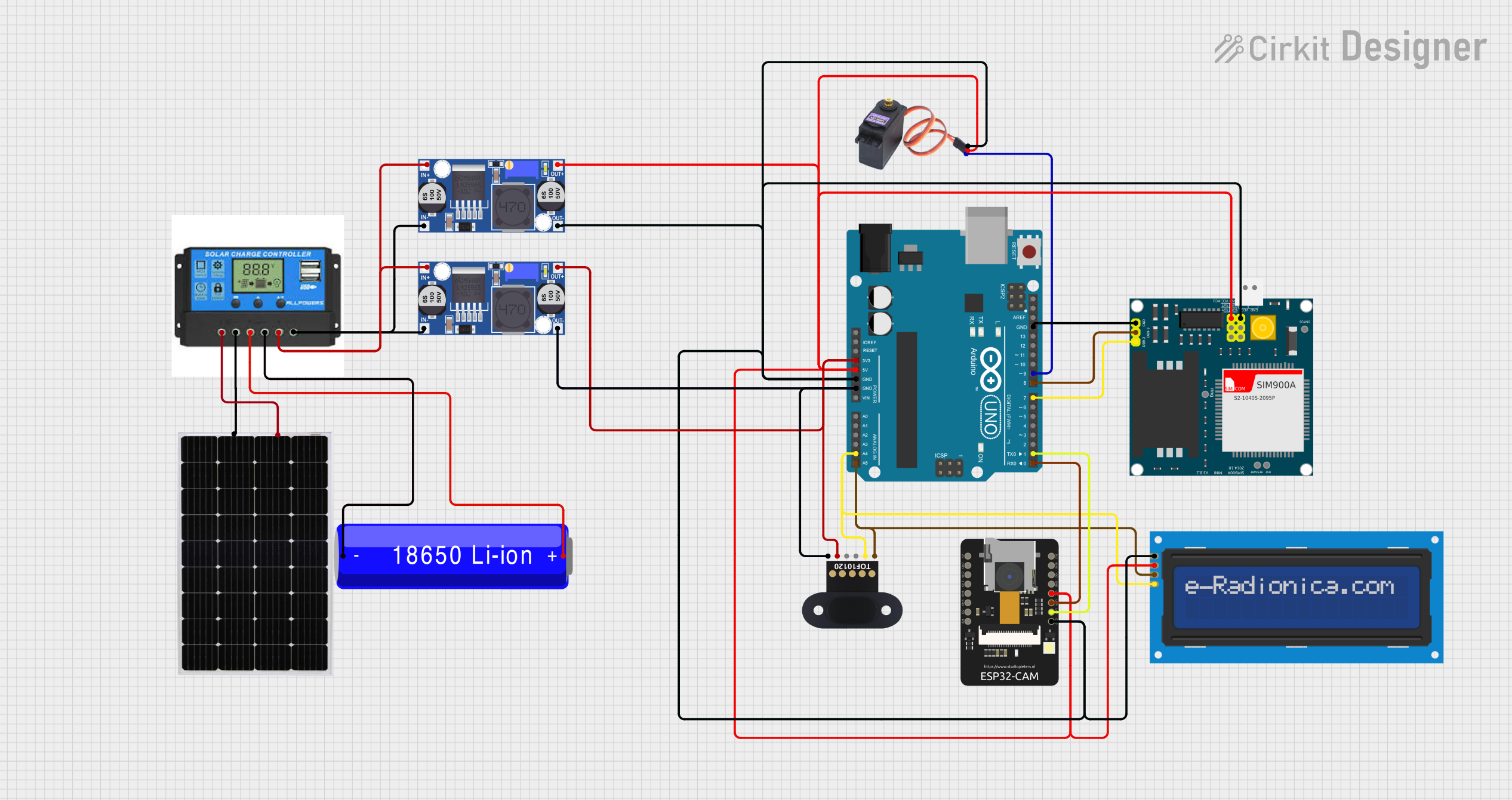
 Open Project in Cirkit Designer
Open Project in Cirkit DesignerExplore Projects Built with Solar Charge Controller

 Open Project in Cirkit Designer
Open Project in Cirkit Designer
 Open Project in Cirkit Designer
Open Project in Cirkit Designer
 Open Project in Cirkit Designer
Open Project in Cirkit Designer
 Open Project in Cirkit Designer
Open Project in Cirkit DesignerCommon Applications and Use Cases
- Off-grid solar power systems
- Solar-powered lighting systems
- Solar water pumping systems
- RVs, boats, and other mobile solar setups
- Backup power systems with battery storage
Technical Specifications
Below are the key technical details for the PWM Solar Charge Controller:
| Parameter | Value |
|---|---|
| Input Voltage Range | 12V/24V auto-detect |
| Maximum Input Current | 10A, 20A, or 30A (model-specific) |
| Battery Voltage Range | 12V/24V |
| Charging Type | Pulse Width Modulation (PWM) |
| Operating Temperature | -20°C to +50°C |
| Efficiency | ≥ 98% |
| Self-Consumption | < 10mA |
| Protection Features | Overcharge, over-discharge, short circuit, reverse polarity |
Pin Configuration and Descriptions
The PWM Solar Charge Controller typically has the following terminal connections:
| Pin/Terminal | Label | Description |
|---|---|---|
| 1 | Solar Panel (+) | Positive terminal for connecting the solar panel |
| 2 | Solar Panel (-) | Negative terminal for connecting the solar panel |
| 3 | Battery (+) | Positive terminal for connecting the battery |
| 4 | Battery (-) | Negative terminal for connecting the battery |
| 5 | Load (+) | Positive terminal for connecting the DC load (e.g., lights, fans) |
| 6 | Load (-) | Negative terminal for connecting the DC load |
Usage Instructions
How to Use the Solar Charge Controller in a Circuit
Connect the Battery First:
- Connect the battery's positive terminal to the Battery (+) pin and the negative terminal to the Battery (-) pin.
- This step is crucial to allow the controller to detect the system voltage (12V or 24V).
Connect the Solar Panel:
- Connect the solar panel's positive terminal to the Solar Panel (+) pin and the negative terminal to the Solar Panel (-) pin.
- Ensure the solar panel is not exposed to sunlight during this step to avoid sparking.
Connect the Load (Optional):
- If you have a DC load (e.g., LED lights, fans), connect its positive terminal to the Load (+) pin and the negative terminal to the Load (-) pin.
Power On:
- Once all connections are secure, expose the solar panel to sunlight. The controller will begin regulating the charging process automatically.
Important Considerations and Best Practices
- Battery Type: Ensure the battery type (e.g., lead-acid, lithium-ion) is compatible with the charge controller.
- Wire Gauge: Use appropriately rated wires to handle the current without overheating.
- Fuses: Install fuses between the solar panel, battery, and controller for added protection.
- Ventilation: Place the controller in a well-ventilated area to prevent overheating.
- Avoid Reverse Polarity: Double-check all connections to avoid damaging the controller.
Arduino Integration Example
The Solar Charge Controller can be monitored using an Arduino UNO to track battery voltage and solar panel performance. Below is an example code snippet:
// Example: Monitor battery voltage using Arduino UNO
// Connect the battery's positive terminal to an analog pin via a voltage divider
const int batteryPin = A0; // Analog pin connected to the voltage divider
const float voltageDividerRatio = 5.7; // Adjust based on your resistor values
const float referenceVoltage = 5.0; // Arduino's reference voltage (5V)
void setup() {
Serial.begin(9600); // Initialize serial communication
}
void loop() {
int rawValue = analogRead(batteryPin); // Read the analog value
float batteryVoltage = (rawValue / 1023.0) * referenceVoltage * voltageDividerRatio;
// Print the battery voltage to the Serial Monitor
Serial.print("Battery Voltage: ");
Serial.print(batteryVoltage);
Serial.println(" V");
delay(1000); // Wait for 1 second before the next reading
}
Note: Use a voltage divider circuit to step down the battery voltage to a safe range (0-5V) for the Arduino's analog input.
Troubleshooting and FAQs
Common Issues and Solutions
| Issue | Possible Cause | Solution |
|---|---|---|
| Controller not powering on | Battery not connected or low voltage | Ensure the battery is properly connected and has sufficient charge. |
| Solar panel not charging the battery | Incorrect wiring or insufficient sunlight | Verify the solar panel connections and ensure it is exposed to direct sunlight. |
| Load not receiving power | Load current exceeds controller's capacity | Check the load's current rating and ensure it is within the controller's limits. |
| Overheating of the controller | Poor ventilation or high ambient temperature | Place the controller in a well-ventilated area and avoid direct sunlight. |
FAQs
Can I use this controller with a lithium-ion battery?
- Yes, but ensure the controller supports lithium-ion batteries and configure the settings accordingly.
What happens if I reverse the polarity of the connections?
- The controller has built-in reverse polarity protection, but it is always best to double-check connections to avoid potential damage.
Can I connect multiple solar panels to this controller?
- Yes, but ensure the combined voltage and current of the panels do not exceed the controller's input ratings.
How do I know if the battery is fully charged?
- The controller typically has an LED indicator or display to show the battery's charging status.
By following this documentation, you can effectively integrate and maintain the PWM Solar Charge Controller in your solar power system.